Origin: (Robert Langdon Book 5) Read online
Page 4
CHAPTER 5
THE LARGEST SYNAGOGUE in Europe is located in Budapest on Dohány Street. Built in the Moorish style with massive twin spires, the shrine has seats for more than three thousand worshippers—with downstairs pews for the men and balcony benches for the women.
Outside in the garden, in a mass burial pit, are interred the bodies of hundreds of Hungarian Jews who died during the horrors of the Nazi occupation. The site is marked by a Tree of Life—a metal sculpture depicting a weeping willow whose leaves are each inscribed with the name of a victim. When a breeze blows, the metal leaves rattle against one another, clattering with an eerie echo above the hallowed ground.
For more than three decades, the spiritual leader of the Great Synagogue had been the eminent Talmudic scholar and Kabbalist—Rabbi Yehuda Köves—who, despite his advancing years and poor health, remained an active member of the Jewish community both in Hungary and around the world.
As the sun set across the Danube, Rabbi Köves exited the synagogue. He made his way past the boutiques and mysterious “ruin bars” of Dohány Street en route to his home on Marcius 15 Square, a stone’s throw from Elisabeth Bridge, which linked the ancient cities of Buda and Pest, which were formally united in 1873.
The Passover holidays were fast approaching—normally one of Köves’s most joyous times of the year—and yet, ever since his return last week from the Parliament of the World’s Religions, he had been feeling only a bottomless disquiet.
I wish I had never attended.
The extraordinary meeting with Bishop Valdespino, Allamah Syed al-Fadl, and futurist Edmond Kirsch had plagued Köves’s thoughts for three full days.
Now, as Köves arrived home, he strode directly to his courtyard garden and unlocked his házikó—the small cottage that served as his private sanctuary and study.
The cottage was a single room with high bookshelves that sagged under the weight of religious tomes. Köves strode to his desk and sat down, frowning at the mess before him.
If anyone saw my desk this week, they’d think I’d lost my mind.
Strewn across the work surface, a half-dozen obscure religious texts lay open, plastered with sticky notes. Behind them, propped open on wooden stands, were three heavy volumes—Hebrew, Aramaic, and English versions of the Torah—each opened to the same book.
Genesis.
In the beginning …
Köves could, of course, recite Genesis from memory, in all three languages; he was more likely to be reading academic commentary on the Zohar or advanced Kabbalistic cosmology theory. For a scholar of Köves’s caliber to study Genesis was much like Einstein going back to study grade-school arithmetic. Nonetheless, that’s what the rabbi had been doing this week, and the notepad on his desk looked to have been assaulted by a wild torrent of hand-scrawled notes, so messy that Köves could barely make them out himself.
I look like I’ve turned into a lunatic.
Rabbi Köves had started with the Torah—the Genesis story shared by Jews and Christians alike. In the beginning God created the heaven and the earth. Next, he had turned to the instructional texts of the Talmud, rereading the rabbinic elucidations on Ma’aseh Bereshit—the Act of Creation. After that, he delved into the Midrash, poring over the commentaries of various venerated exegetes who had attempted to explain the perceived contradictions in the traditional Creation story. Finally, Köves buried himself in the mystical Kabbalistic science of the Zohar, in which the unknowable God manifested as ten different sephirot, or dimensions, arranged along channels called the Tree of Life, and from which blossomed four separate universes.
The arcane complexity of the beliefs that made up Judaism had always been comforting to Köves—a reminder from God that humankind was not meant to understand all things. And yet now, after viewing Edmond Kirsch’s presentation, and contemplating the simplicity and clarity of what Kirsch had discovered, Köves felt like he had spent the past three days staring into a collection of outdated contradictions. At one point, all he could do was push aside his ancient texts and go for a long walk along the Danube to gather his thoughts.
Rabbi Köves had finally begun to accept a painful truth: Kirsch’s work would indeed have devastating repercussions for the faithful souls of this world. The scientist’s revelation boldly contradicted almost every established religious doctrine, and it did so in a distressingly simple and persuasive manner.
I cannot forget that final image, Köves thought, recalling the distressing conclusion of Kirsch’s presentation that they had watched on Kirsch’s oversized phone. This news will affect every human being—not just the pious.
Now, despite his reflections over the last few days, Rabbi Köves still felt no closer to knowing what to do with the information that Kirsch had provided.
He doubted Valdespino and al-Fadl had found any clarity either. The three men had communicated by phone two days ago, but the conversation had not been productive.
“My friends,” Valdespino had begun. “Obviously, Mr. Kirsch’s presentation was disturbing … on many levels. I urged him to call and discuss it further with me, but he has gone silent. Now I believe we have a decision to make.”
“I’ve made my decision,” said al-Fadl. “We cannot sit idly by. We need to take control of this situation. Kirsch has a well-publicized scorn for religion, and he will frame his discovery in a way to do as much damage as possible to the future of faith. We must be proactive. We must announce his discovery ourselves. Immediately. We must cast it in the proper light so as to soften the impact, and make it as nonthreatening as possible to the believers in the spiritual world.”
“I realize we discussed going public,” Valdespino said, “but unfortunately, I cannot imagine how one frames this information in a nonthreatening way.” He sighed heavily. “There is also the issue of our vow to Mr. Kirsch that we would keep his secret.”
“True,” al-Fadl said, “and I too am conflicted about breaking that vow, but I feel we must choose the lesser of two evils and take action on behalf of the greater good. We are all under attack—Muslims, Jews, Christians, Hindus, all religions alike—and considering that our faiths all concur on the fundamental truths that Mr. Kirsch is undermining, we have an obligation to present this material in a way that does not distress our communities.”
“I fear there is no way this will make any sense,” Valdespino said. “If we are entertaining the notion of going public with Kirsch’s news, the only viable approach will be to cast doubt on his discovery—to discredit him before he can get his message out.”
“Edmond Kirsch?” al-Fadl challenged. “A brilliant scientist who has never been wrong about anything? Were we all in the same meeting with Kirsch? His presentation was persuasive.”
Valdespino grunted. “No more persuasive than presentations made by Galileo, Bruno, or Copernicus in their day. Religions have been in this predicament before. This is just science banging on our door once again.”
“But on a far deeper level than the discoveries of physics and astronomy!” al-Fadl exclaimed. “Kirsch is challenging the very core—the fundamental root of everything we believe! You can cite history all you like, but don’t forget, despite your Vatican’s best efforts to silence men like Galileo, his science eventually prevailed. And Kirsch’s will too. There is no way to stop this from happening.”
There was a grave silence.
“My position on this matter is simple,” Valdespino said. “I wish Edmond Kirsch had not made this discovery. I fear that we are unprepared to handle his findings. And my strong preference is that this information never see the light of day.” He paused. “At the same time, I believe that the events of our world happen according to God’s plan. Perhaps with prayer, God will speak to Mr. Kirsch and persuade him to reconsider making his discovery public.”
Al-Fadl scoffed audibly. “I don’t think Mr. Kirsch is the kind of man capable of hearing the voice of God.”
“Perhaps not,” Valdespino said. “But miracles happen every day.”
Al-Fadl fired back hotly, “With all due respect, unless you’re praying that God strikes Kirsch dead before he can announce—”
“Gentlemen!” Köves intervened, attempting to defuse the growing tension. “Our decision need not be rushed. We don’t need to reach a consensus tonight. Mr. Kirsch said his announcement is a month away. Might I suggest that we meditate privately on the matter, and speak again in several days? Perhaps the proper course will reveal itself through reflection.”
“Wise counsel,” Valdespino replied.
“We should not wait too long,” al-Fadl cautioned. “Let’s speak again by phone two days from now.”
“Agreed,” Valdespino said. “We can make our final decision at that time.”
That had been two days ago, and now the night of their follow-up conversation had arrived.
Alone in his házikó study, Rabbi Köves was growing anxious. Tonight’s scheduled call was now almost ten minutes overdue.
At last, the phone rang, and Köves seized it.
“Hello, Rabbi,” said Bishop Valdespino, sounding troubled. “I’m sorry for the delay.” He paused. “I’m afraid Allamah al-Fadl will not be joining us on this call.”
“Oh?” Köves said with surprise. “Is everything all right?”
“I don’t know. I’ve been trying to reach him all day, but the allamah seems to have … disappeared. None of his colleagues have any idea where he is.”
Köves felt a chill. “That’s alarming.”
“I agree. I hope he is okay. Unfortunately, I have more news.” The bishop paused, his tone darkening further. “I have just learned that Edmond Kirsch is holding an event to share his discovery with the world … tonight.”
“Tonight?!” Köves demanded. “He said it would be a month!”
“Yes,” Valdespino said. “He lied.”
CHAPTER 6
WINSTON’S FRIENDLY VOICE reverberated in Langdon’s headset. “Directly in front of you, Professor, you will see the largest painting in our collection, though most guests do not spot it right away.”
Langdon gazed across the museum’s atrium but saw nothing except a wall of glass that looked out over the lagoon. “I’m sorry, I think I may be in the majority here. I don’t see a painting.”
“Well, it is displayed rather unconventionally,” Winston said with a laugh. “The canvas is mounted not on the wall, but rather on the floor.”
I should have guessed, Langdon thought, lowering his gaze and moving forward until he saw the sprawling rectangular canvas stretched out across the stone at his feet.
The enormous painting consisted of a single color—a monochrome field of deep blue—and viewers stood around its perimeter, staring down at it as if peering into a small pond.
“This painting is nearly six thousand square feet,” Winston offered.
Langdon realized it was ten times the size of his first Cambridge apartment.
“It is by Yves Klein and has become affectionately known as The Swimming Pool.”
Langdon had to admit that the arresting richness of this shade of blue gave him the sense he could dive directly into the canvas.
“Klein invented this color,” Winston continued. “It’s called International Klein Blue, and he claimed its profundity evoked the immateriality and boundlessness of his own utopian vision of the world.”
Langdon sensed Winston was now reading from a script.
“Klein is best known for his blue paintings, but he is also known for a disturbing trick photograph called Leap into the Void, which caused quite a panic when it was revealed in 1960.”
Langdon had seen Leap into the Void at the Museum of Modern Art in New York. The photo was more than a little disconcerting, depicting a well-dressed man doing a swan dive off a high building and plunging toward the pavement. In truth, the image was a trick—brilliantly conceived and devilishly retouched with a razor blade, long before the days of Photoshop.
“In addition,” Winston said, “Klein also composed the musical piece Monotone-Silence, in which a symphony orchestra performs a single D-major chord for a full twenty minutes.”
“And people listen?”
“Thousands. And the one chord is just the first movement. In the second movement, the orchestra sits motionless and performs ‘pure silence’ for twenty minutes.”
“You’re joking, right?”
“No, I’m quite serious. In its defense, the performance was probably not as dull as it might sound; the stage also included three naked women, slathered in blue paint, rolling around on giant canvases.”
Although Langdon had devoted the better part of his career to studying art, it troubled him that he had never quite learned how to appreciate the art world’s more avant-garde offerings. The appeal of modern art remained a mystery to him.
“I mean no disrespect, Winston, but I’ve got to tell you, I often find it hard to know when something is ‘modern art’ and when something is just plain bizarre.”
Winston’s reply was deadpan. “Well, that is often the question, isn’t it? In your world of classical art, pieces are revered for the artist’s skill of execution—that is, how deftly he places the brush to canvas or the chisel to stone. In modern art, however, masterpieces are often more about the idea than the execution. For example, anyone could easily compose a forty-minute symphony consisting of nothing but one chord and silence, but it was Yves Klein who had the idea.”
“Fair enough.”
“Of course, The Fog Sculpture outside is a perfect example of conceptual art. The artist had an idea—to run perforated pipes beneath the bridge and blow fog onto the lagoon—but the creation of the piece was performed by local plumbers.” Winston paused. “Although I do give the artist very high marks for using her medium as a code.”
“Fog is a code?”
“It is. A cryptic tribute to the museum’s architect.”
“Frank Gehry?”
“Frank O. Gehry,” Winston corrected.
“Clever.”
As Langdon moved toward the windows, Winston said, “You have a nice view of the spider from here. Did you see Maman on your way in?”
Langdon gazed out the window, across the lagoon, to the massive black widow sculpture on the plaza. “Yes. She’s pretty hard to miss.”
“I sense from your intonation that you’re not a fan?”
“I’m trying to be.” Langdon paused. “As a classicist, I’m a bit of a fish out of water here.”
“Interesting,” Winston said. “I had imagined that you of all people would appreciate Maman. She is a perfect example of the classical notion of juxtaposition. In fact, you might want to use her in class when you next teach the concept.”
Langdon eyed the spider, seeing nothing of the sort. When it came to teaching juxtaposition, Langdon preferred something a bit more traditional. “I think I’ll stick with the David.”
“Yes, Michelangelo is the gold standard,” Winston said with a chuckle, “brilliantly posing David in an effeminate contrapposto, his limp wrist casually holding a flaccid slingshot, conveying a feminine vulnerability. And yet David’s eyes radiate a lethal determination, his tendons and veins bulging in anticipation of killing Goliath. The work is simultaneously delicate and deadly.”
Langdon was impressed with the description and wished his own students had as clear an understanding of Michelangelo’s masterpiece.
“Maman is no different from David,” Winston said. “An equally bold juxtaposition of opposing archetypal principles. In nature, the black widow is a fearful creature—a predator who captures victims in her web and kills them. Despite being lethal, she is depicted here with a burgeoning egg sac, preparing to give life, making her both predator and progenitor—a powerful core perched atop impossibly slender legs, conveying both strength and fragility. Maman could be called a modern-day David, if you will.”
“I won’t,” Langdon replied, smiling, “but I must admit your analysis gives me food for thought.”
“Good,
then let me show you one final work. It happens to be an Edmond Kirsch original.”
“Really? I never knew Edmond was an artist.”
Winston laughed. “I’ll let you be the judge of that.”
Langdon let Winston guide him past the windows to a spacious alcove in which a group of guests had assembled before a large slab of dried mud hanging on the wall. At first glance, the slab of hardened clay reminded Langdon of a museum fossil exhibit. But this mud contained no fossils. Instead, it bore crudely etched markings similar to those a child might draw with a stick in wet cement.
The crowd looked unimpressed.
“Edmond did this?” grumbled a mink-clad woman with Botoxed lips. “I don’t get it.”
The teacher in Langdon could not resist. “It’s actually quite clever,” he interrupted. “So far it’s my favorite piece in the entire museum.”
The woman spun, eyeing him with more than a hint of disdain. “Oh really? Then do enlighten me.”
I’d be happy to. Langdon walked over to the series of markings etched coarsely into the clay surface.
“Well, first of all,” Langdon said, “Edmond inscribed this piece in clay as an homage to mankind’s earliest written language, cuneiform.”
The woman blinked, looking uncertain.
“The three heavy markings in the middle,” Langdon continued, “spell the word ‘fish’ in Assyrian. It’s called a pictogram. If you look carefully, you can imagine the fish’s open mouth facing right, as well as the triangular scales on his body.”
The assembled group all cocked their heads, studying the work again.
“And if you look over here,” Langdon said, pointing to the series of depressions to the left of the fish, “you can see that Edmond made footprints in the mud behind the fish, to represent the fish’s historic evolutionary step onto land.”

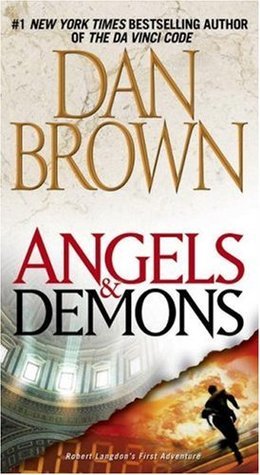 Angels & Demons
Angels & Demons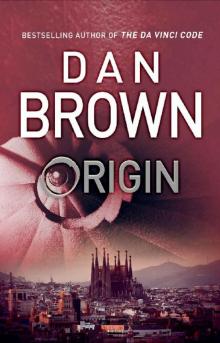 Origin
Origin The Da Vinci Code
The Da Vinci Code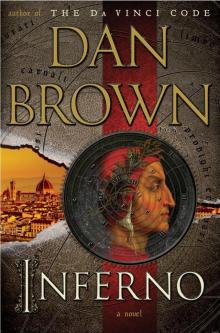 Inferno
Inferno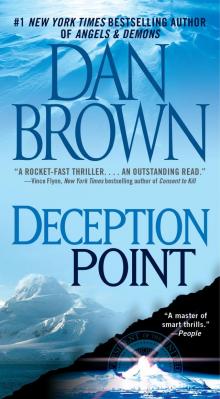 Deception Point
Deception Point Digital Fortress
Digital Fortress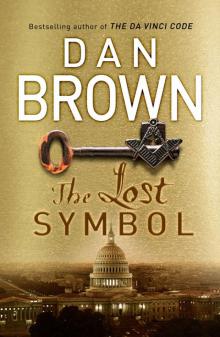 The Lost Symbol
The Lost Symbol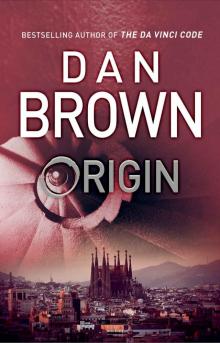 Origin: (Robert Langdon Book 5)
Origin: (Robert Langdon Book 5)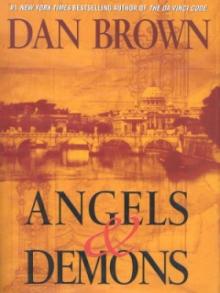 Angles & Demons
Angles & Demons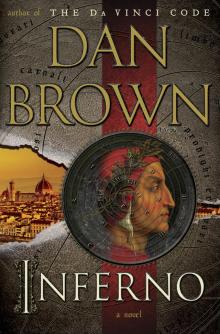 Inferno: A Novel
Inferno: A Novel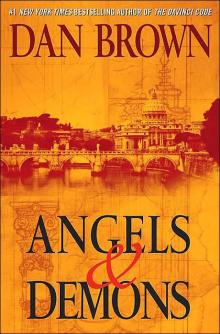 Angels & Demons rl-1
Angels & Demons rl-1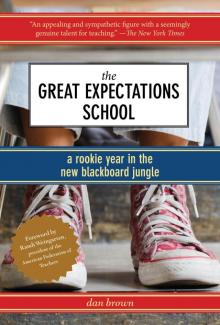 The Great Expectations School
The Great Expectations School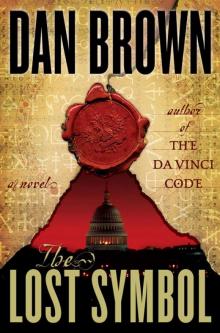 The Lost Symbol rl-3
The Lost Symbol rl-3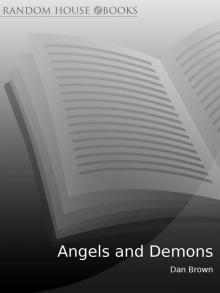 Angels and Demons
Angels and Demons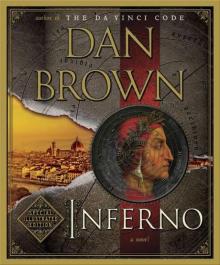 Inferno: Special Illustrated Edition: Featuring Robert Langdon
Inferno: Special Illustrated Edition: Featuring Robert Langdon